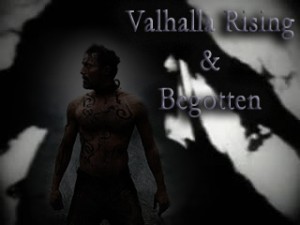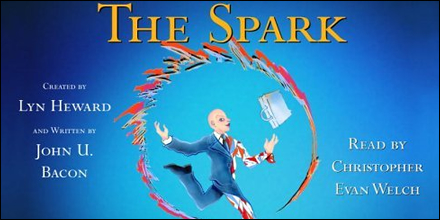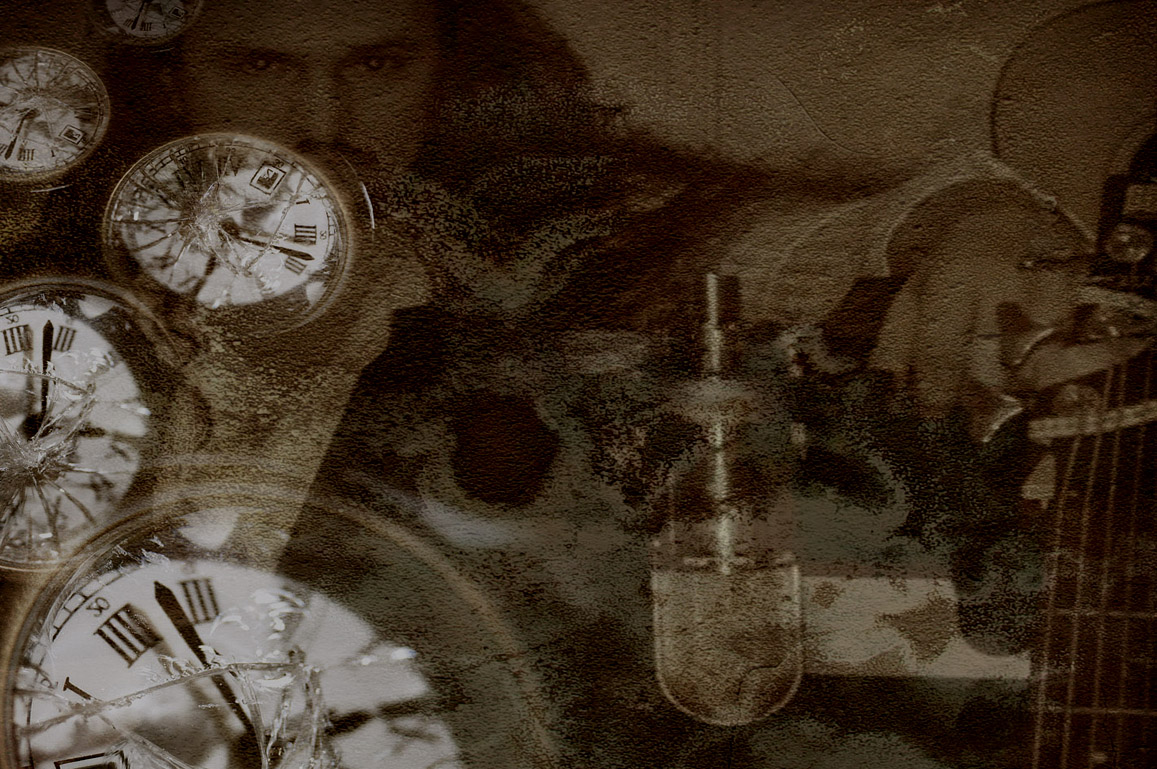I recently got around to checking out Nicolas Winding Refn’s Valhalla Rising and I kinda loved it. It reminded me a lot of E. Elias Merhige’s Begotten which is my favorite movie. I don’t think Refn intentionally borrowed from Merhige’s Begotten but there sure are a lot of parallels between the two. The story lines are somewhat similar and even though the visual style is completely different there is a linear thread in the visual ideas that are oddly the same.
First off, you’ve probably never seen Begotten so let me clue you in a bit on what the movie is about.
Now, it’s kind of hard to relay a synopsis of this movie because it’s very subjective. There’s no dialogue, barely any music, and the entire film looks as if someone with chronic nightmares was hooked up to a machine that was able to record the visions that run through his head at night – but the technology isn’t quite there and the video feed looks all scratchy and hazy.
The only way to know what’s going on with Begotten is watching the whole movie all the way through, wait for the ending credits, see who’s who in the character department, then go back to watch it again and pay attention to the DVD chapter titles. Even with all that you’ve still got to pay attention to the movie as it tells a story through visuals. And that’s a hard task as well since the film has such a strange look to it.
You see, Merhige took the film he shot and chemically treated it to get the look he had in mind. The process took about 10 hours per minute of film. It’s something you can’t really duplicate with CGI or video editing plug-ins.
My interpretation of Begotten goes like this: The story opens up with a figure alone in a room that represents God. God is cutting open his stomach with a razor blade resulting in his partial death. In the moment of his dying, Mother Earth emerges and takes his seed by way of a hand job (I’m guessing to prevent original sin). Mother Earth then hangs around for the death of God and gives birth to the Son of Earth. Son of Earth quivers above the ground like a flame until a pack of Druids or Pagans find him. They’re like, “hey, this guy seems kinda cool. Let’s pack him around for a while.”
So they take Son of Earth on a little journey. In their travels Son of Earth vomits up stuff into the ground. This makes the Nomadic tribe very happy. We then see Son of Earth in new clothing as the tribe rejoices. What doesn’t make them happy is when Mother Earth shows up to reclaim him. They end up raping Mother Earth for a while. Son of Earth mourns the loss of Mother Earth and the tribe returns in better clothing but still not fashionably hip. But that’s okay because their plan is to kill Son of Earth, burn him, and commit both the dead bodies to the ground. In the end we see the tribe trying to create something out of what looks like the remains spilled from the disemboweled God and Son of Earth. The movie closes with a rebirth of nature.
Something like that.
Like I said, it’s hard to interpret what’s going on because you really have to watch the images and not only translate what you’re seeing but trying to piece it together with what you know of religious history and pagan beliefs.
Valhalla Rising is a bit of a different story but it closely follows the path of how Begotten unfolds.
First off, both movies start with a text sequence which sets you up for what’s about to go down.
 Yes, Man and Nature. Valhalla Rising’s focus is on a lone warrior named “One Eye.” He’s a mute and has been captured by a group of Pagans. He must fight other bands of Pagans for sport and is kept in a cage when he’s not fighting. This group of people keep him strong by having him do menial tasks and is fed by a young boy that gives him soup. He’s a nice young lad. I hope he doesn’t get killed or anything.
Yes, Man and Nature. Valhalla Rising’s focus is on a lone warrior named “One Eye.” He’s a mute and has been captured by a group of Pagans. He must fight other bands of Pagans for sport and is kept in a cage when he’s not fighting. This group of people keep him strong by having him do menial tasks and is fed by a young boy that gives him soup. He’s a nice young lad. I hope he doesn’t get killed or anything.
One Eye has visions of the future that he can’t control. One day he finds himself bathing in a pond and realizes, “hey, I’ve seen this before. This is all familiar” So he looks under the surface of the water and finds something which will help him escape.
When he escapes we are exposed to the brutality of One Eye against many (not just mono-e-mono) and how he exacts his revenge. One of his beaten up captors tells him that even though he’s escaped their grasp his only path will eventually lead him to hell. One Eye finishes him off by disemboweling him. Cause that’s how One Eye rolls. (Get it?)
 After One Eye finishes off his captors we’re shown an image which puts his character in stark comparison to his surroundings. We see that One Eye is a force of nature and a part of nature just like the mountains that surround him. He’s then joined by the young boy that used to bring him food as they travel to somewhere else. This boy will speak for him and act as a liaison.
After One Eye finishes off his captors we’re shown an image which puts his character in stark comparison to his surroundings. We see that One Eye is a force of nature and a part of nature just like the mountains that surround him. He’s then joined by the young boy that used to bring him food as they travel to somewhere else. This boy will speak for him and act as a liaison.
In Begotten we see the disemboweled God give way to Mother Earth and this begets Son of Earth – Nature joined by Humanity. The young boy that’s now joining One Eye can be seen as the humanity to the natural phenomenon that is One Eye.
In between these images of characters interacting with their environment we are shown strange flashes of shapes in what resembles an evolving Rorschach test. What you’re seeing at one point could be a neurological mapping of nerves or it could be a collection of streams.
 In both Begotten and Valhalla Rising the main character is being held captive by a group of Pagans. These men basically found this guy, said “let’s keep this guy around for a bit and see what we can get from him” then started walking. They’re traveling across the Earth to an undisclosed location. It’s a pattern of man trying to conquer nature. Man wants to harness the uncontrollable force and use it for himself. Both movies don’t examine how or why this pack of men found the individual prize. It’s just Discovery followed by Controller.
In both Begotten and Valhalla Rising the main character is being held captive by a group of Pagans. These men basically found this guy, said “let’s keep this guy around for a bit and see what we can get from him” then started walking. They’re traveling across the Earth to an undisclosed location. It’s a pattern of man trying to conquer nature. Man wants to harness the uncontrollable force and use it for himself. Both movies don’t examine how or why this pack of men found the individual prize. It’s just Discovery followed by Controller.
 Both movies have a scene of transporting this prize.
Both movies have a scene of transporting this prize.
 In both movies we see that Man is able to get something from both One Eye and Son of Earth temporarily. What we see is that when both of these characters try to go their own way Man will try and destroy them.
In both movies we see that Man is able to get something from both One Eye and Son of Earth temporarily. What we see is that when both of these characters try to go their own way Man will try and destroy them.
In Begotten, Mother Earth comes back to reclaim Son of Earth and both are killed by Man. There is a rape scene in both films: Begotten has Man raping Mother Earth, Valhalla Rising has a man raping his traveling companion in a fit of drugged up rage.
When the killing and raping is done we see that Man and Nature now stand separate again. Man loses to the natural forces as Begotten has Mother Earth leading Son of Earth back with her away from Man, and in Valhalla Rising One Eye leads the young boy and the people he let live with him out of what they consider to be Hell. It should be stated that in Begotten it appears as though the nomadic tribe has killed both Son of Earth and Mother Earth for their own needs. But then we see an image of Mother Earth leading Son of Earth away from them – a flashback of sorts that says that even though Man thinks he’s won, Mother Earth has other plans.
 Towards the end of both movies we see characters taking physical remnants of their belief system and trying to rebuild on their own. Begotten has the nomadic characters stuff and mixing things left over from their journey to rejuvenate life inside a bowl. In Valhalla Rising we see One Eye building a type of religious pillar (in an attempt to atone?) from river bed rocks while everyone is drugged up. The drugs everyone takes makes them all go through different phases: one person experiences apathy, one experiences rage, one experiences an Eisensteinian awe of his environment, etc.
Towards the end of both movies we see characters taking physical remnants of their belief system and trying to rebuild on their own. Begotten has the nomadic characters stuff and mixing things left over from their journey to rejuvenate life inside a bowl. In Valhalla Rising we see One Eye building a type of religious pillar (in an attempt to atone?) from river bed rocks while everyone is drugged up. The drugs everyone takes makes them all go through different phases: one person experiences apathy, one experiences rage, one experiences an Eisensteinian awe of his environment, etc.
And in the end we see the persistence of Nature over man – in spite of man and not because of man.
 I know that Refn is a big fan of the films of Alejandro Jodorowsky, another experimental film maker like E. Elias Merhige. But I have no idea if Refn has ever seen Begotten. I’m certainly not saying that Refn is ripping Merhige off or anything but I’ve never seen any movie that quite lined up to Begotten like Valhalla Rising.
I know that Refn is a big fan of the films of Alejandro Jodorowsky, another experimental film maker like E. Elias Merhige. But I have no idea if Refn has ever seen Begotten. I’m certainly not saying that Refn is ripping Merhige off or anything but I’ve never seen any movie that quite lined up to Begotten like Valhalla Rising.
Well, if you haven’t seen either film then you’re in for a treat. I’ll admit that both movies aren’t for everyone. If you’re looking for an easy viewing experience then go somewhere else. Both films are challenging to an audience. They make you constantly re-examine what you’ve just seen and forces you to focus on challenging visual elements essential to the storyline. It’s not Madea’s Big Happy Family by any means. No, these are both films by visionary film makers that have something to say and a unique way of telling it.








